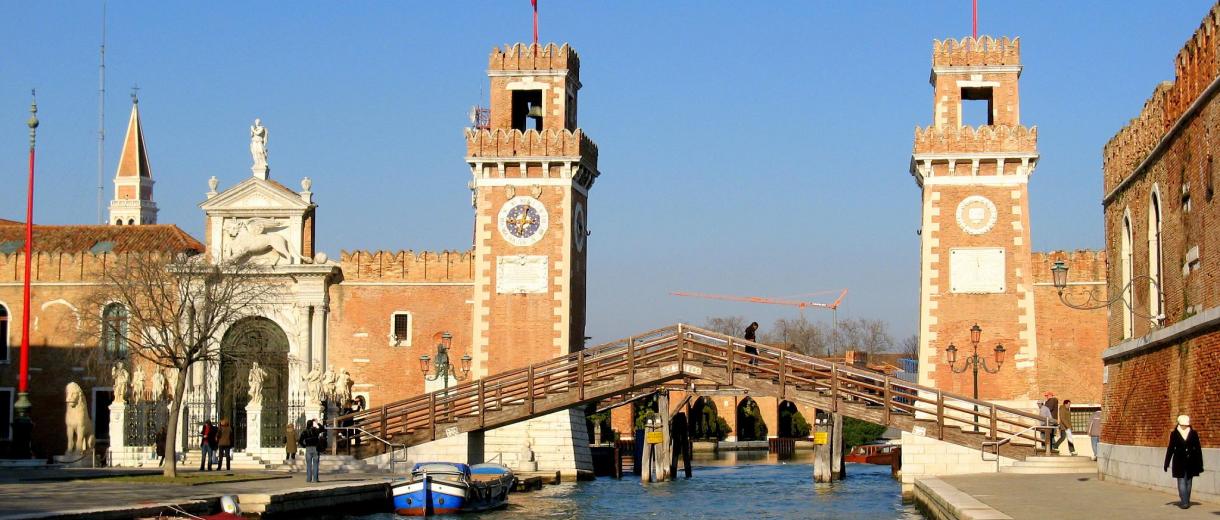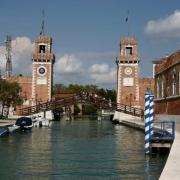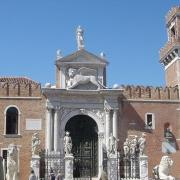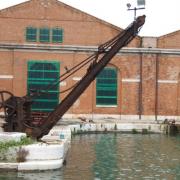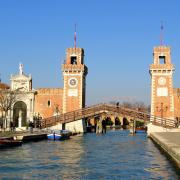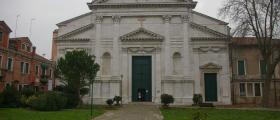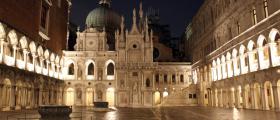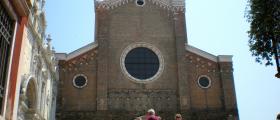The Arsenal of Venice
Since the beginning of the XII century, the Arsenal was the heart of the naval industry of Venice. It occupies quite a large area of the city a clear sign of how important this industry was for Venice.
The conquest of the Aegean See (Turkish domination) and the routes to north Europe were possible thanks to the ships built in there. The Arsenal has been the major production pole of the preindustrial era, substantially it was the first factory ever seen in the world. The number of workers, called Arsenalotti, reach 2000 unities during the major production periods and its total surface was 46 hectares.
The Arsenal gained a quotation also in the Divina Commedia by Dante Alighieri under the name of Arzanà. The name Arsenale has a very interesting etymology. Its name comes from a Turkish word that means “place of production“. During the year the word changed into the current Arsenale.
It has been strategically and logistically positioned in the city, to be protected by enemy attacks and to be easily supplied with the wood from Cadore forests. The first productive instalments were no more than small “Squeri” (shipyards) by the side of the old Dock, which were enlarged only in the beginning of the XIII century. Lately in this period were also built the San Daniele Lake, The Arsenale Nuovo, The Fonderie, The Corderie, the Officine dei Remi and the Artiglieria (Artillery), a real industrial pole. In 1453 after the Constantinople’s fall and then the beginning of the Turkish threat, the Arsenal becomes the bulwark to protect the city, the Porta d’Acqua (rebuilt in the beginning of 1600) and the Porta di terra (representing one of the first renaissance art example in Venice) were built.
The last big expansion of the area happened between 1470 and 1570, when the total surface reached 24 hectares Highly important was the strategic production of ropes, a very precious good of that epoch, that was produced with avant-garde methods never seen before, as well as the production of ships. The construction of the most important ships of the Venetian fleet, the Galee and the bigger Galeazze, was done in secret. Thanks to the efficiency of those boats Venice won the battle of Lepanto in 1571.
During the Austro-Hungarian domination the Arsenal role has been revisited and partially reduced despite it was effectively part of the military and commercial production of the Austrians.
The last expansion was made during the first years of the reign of Italy. The idea was to create an important naval base on the north Adriatic Sea. New buildings were added up, new canals were digged and some foundation were raised up to 70 centimetres. The pre-existing structures between the Darsena Nuova and the Darsena Nuovissima were demolished in order to dig the new Darsena Grande.
However the Arsenal became too small for the dimensions of modern ships and also for their transit. Not large enough, the area was clearly too small and obsolete: this signed its decline.
On the last few decades, however, its area comes to a new life and cultural spaces have been created within. We can not forget to mention the Biennale Pavilions that comprehend most of the area or the Naval Museum opened every day except on Sundays and holidays.

